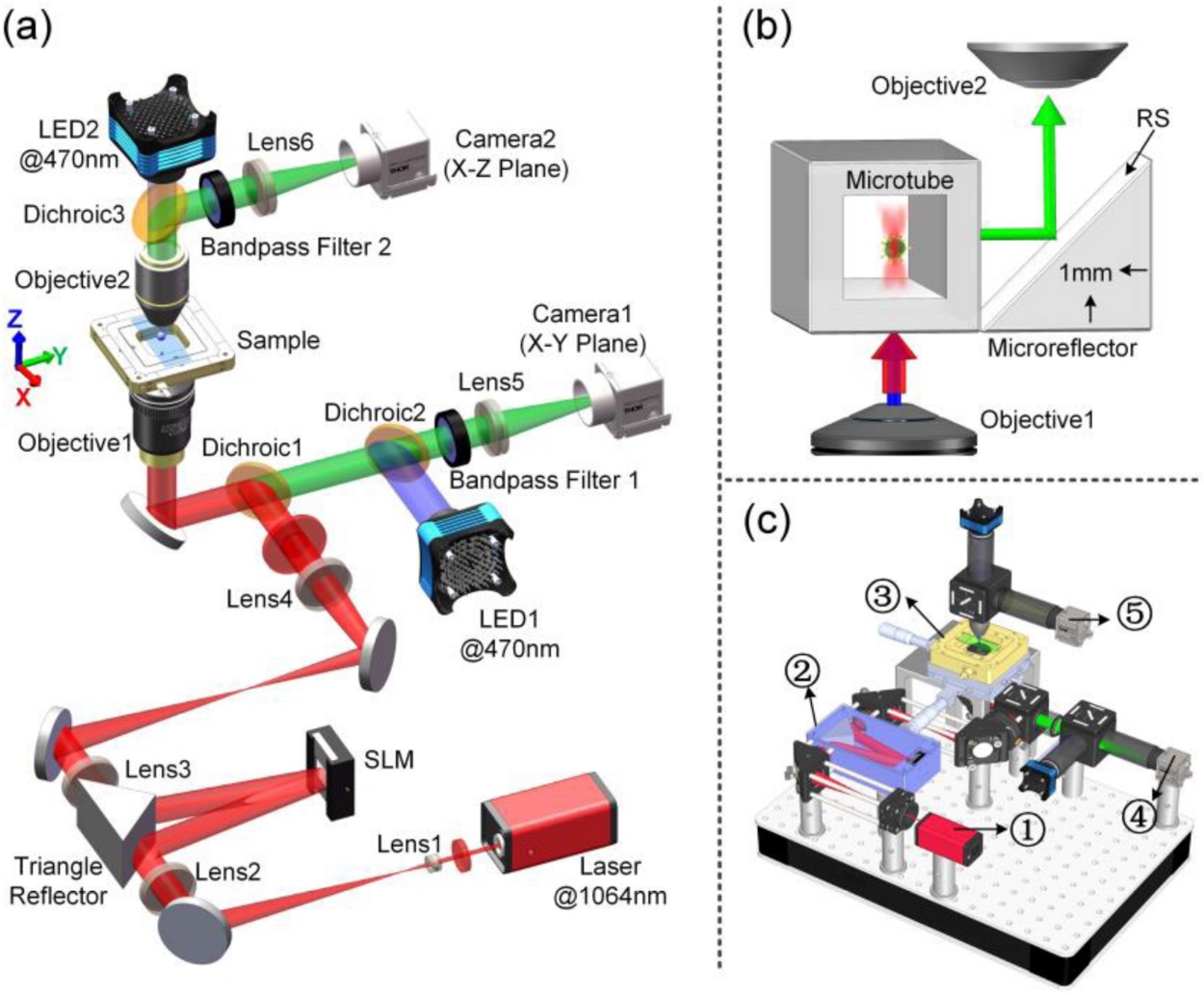Optical trapping has become a powerful tool in numerous fields such as biology, physics, chemistry. In light-matter interaction, transfer of optical linear momentum and angular momentum gives rise to optical forces acting on the illuminated object, thus enabling the acceleration, three-dimensional (3D) confinement, spinning, rotation, and even negative pulling of particles.
But, in conventional optical trapping systems, trapping and imaging share the same objective lens, confining the region of observation to the focal plane. For the capture of optical trapping processes occurring in other planes, especially the axial plane (the one containing the z-axis) is still a challenge. How to solve the limitation of acquiring the axial-plane information in axial plane trapping optical system?
A research team led by Prof. Dr. YAO Baoli from Xi'an Institute of Optics and Precision Mechanics (XIOPM) of the Chinese Academy of Sciences (CAS) developed an optical tweezers system that allows for simultaneous optical trapping and imaging in the axial plane. Using this technology, they investigated axial-plane trapping and imaging performance in various optical fields, including Bessel, Airy, and snake-like beams. The results were published in Reports on Progress in Physics (2018 IF: 16.62) (https://doi.org/10.1088/1361-6633/ab7175).
Schematic of the simultaneous optical trapping and fluorescent imaging in the axial plane. (Image by XIOPM)
In their scheme, a right-angled silver-coated micro-reflector was used to realize the axial-plane imaging, with which the emitted fluorescence is reflected by the silver-coated bevel of the micro-reflector into the imaging objective. By the use of such a device, better imaging performance was achieved with minor spherical aberration, coma, and astigmatism than other techniques like the use of a micro prism.
To realize stable 3D trapping and sophisticated dynamic micromanipulation in the axial plane, a modified Gerchberg–Saxton (GS) algorithm based on the axial-plane Fourier transform (FT) was proposed. Combining this algorithm and the axial-plane imaging, they demonstrated the versatile axial-plane HOTs and investigated the trapping and guiding performance of nondiffracting beams, including Bessel, Airy, and snake-like beams.
The simultaneous axial-plane trapping and imaging technique extends the trapping range to a great extent, enabling observation of trapping in the axial plane. Furthermore, it is fundamental technology to the study of other fields, including optical pulling, longitudinal optical binding, tomographic phase microscopy, and super-resolution microscopy.



